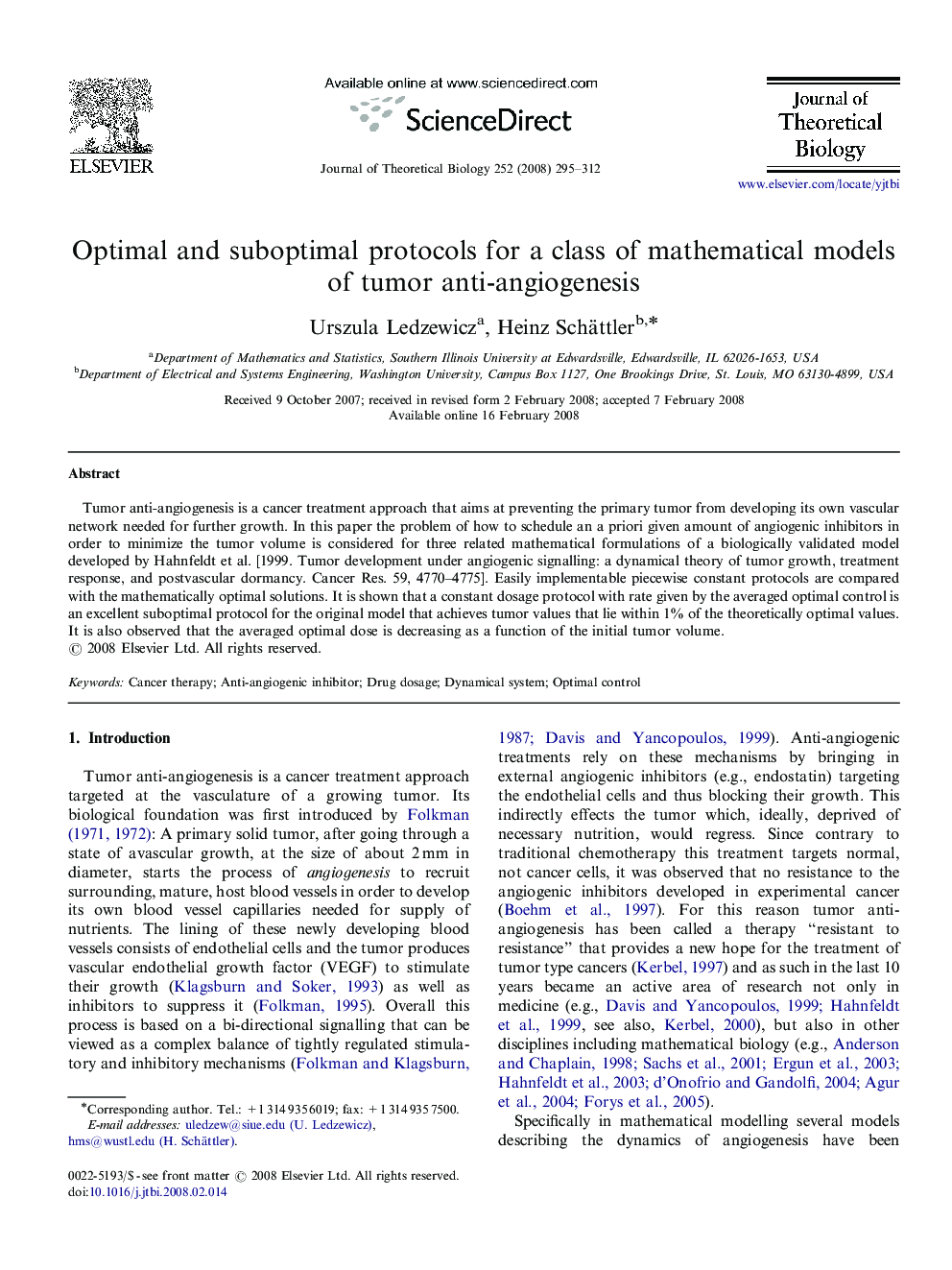| Article ID | Journal | Published Year | Pages | File Type |
|---|---|---|---|---|
| 4498614 | Journal of Theoretical Biology | 2008 | 18 Pages |
Tumor anti-angiogenesis is a cancer treatment approach that aims at preventing the primary tumor from developing its own vascular network needed for further growth. In this paper the problem of how to schedule an a priori given amount of angiogenic inhibitors in order to minimize the tumor volume is considered for three related mathematical formulations of a biologically validated model developed by Hahnfeldt et al. [1999. Tumor development under angiogenic signalling: a dynamical theory of tumor growth, treatment response, and postvascular dormancy. Cancer Res. 59, 4770–4775]. Easily implementable piecewise constant protocols are compared with the mathematically optimal solutions. It is shown that a constant dosage protocol with rate given by the averaged optimal control is an excellent suboptimal protocol for the original model that achieves tumor values that lie within 1% of the theoretically optimal values. It is also observed that the averaged optimal dose is decreasing as a function of the initial tumor volume.
